#public housing
Text



Source
Another contributor to the housing crisis
#housing crisis#news#public housing#housing#affordable housing#capitalism#eat the rich#abolish landlords
2K notes
·
View notes
Text
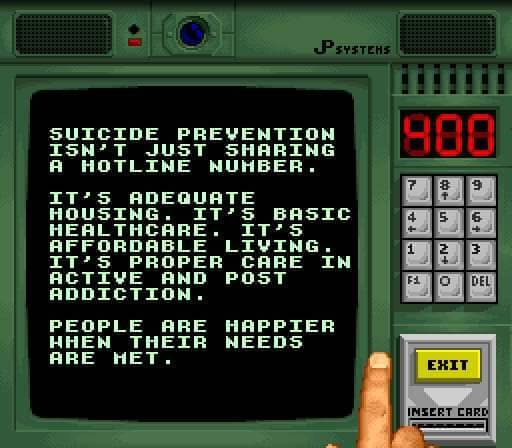
#us politics#suicide prevention#suicidal thoughts#tw suicide#public housing#communal housing#public and subsidized housing#affordable living#living wage#standard of living#addiction therapy#recovering addicts#safe injection sites#decriminalize drugs#drug addiction#memes#social programs#social progress
505 notes
·
View notes
Photo
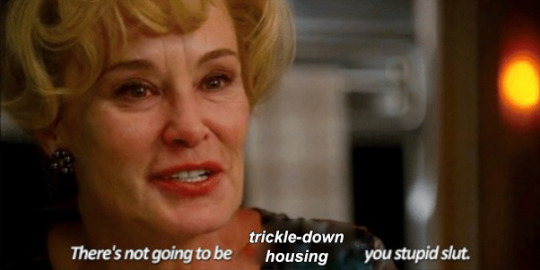



i hate YIMBYs
#please steal#mine#meme#urban planning#trick down housing#bus#transportation#yimby#market housing#public housing#door#window#communism#9.12.22
1K notes
·
View notes
Text

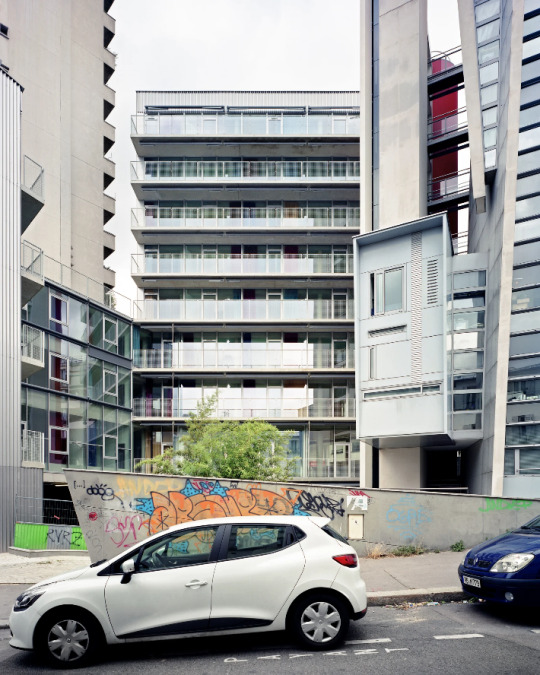
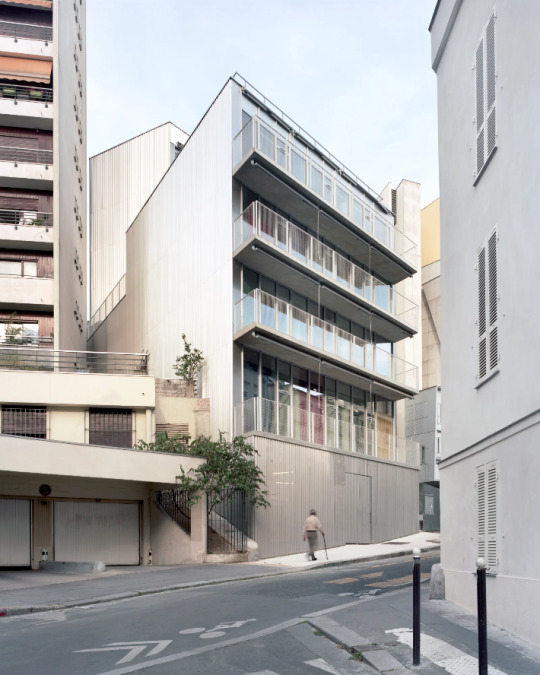



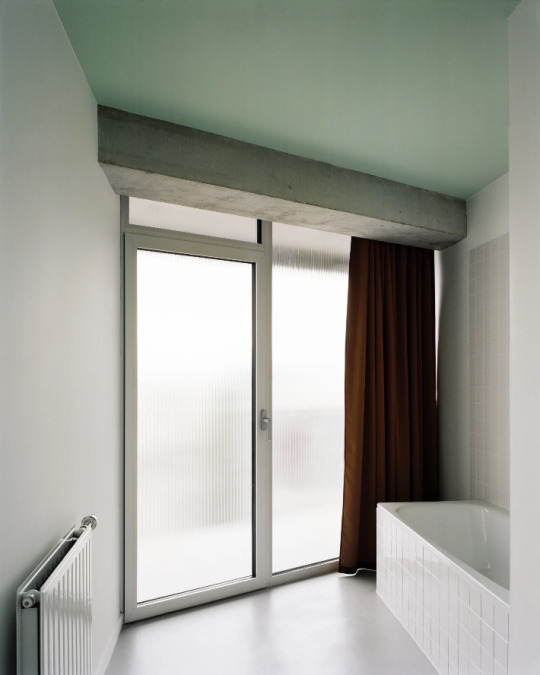
The Stopover Housing, Paris - Bruther
#Bruther#architecture#design#building#modern architecture#interiors#modern#housing#social housing#public housing#low cost#sustainable design#metal cladding#corrugated#balconies#apartments#apartment block#tower#urban#paris#french architecture
57 notes
·
View notes
Note
So, in a very brief aside when you mentioned the spoke-and-wheel model for King's Landing. You also mentioned public housing in flea bottom, sewer and water systems, and public hospitals. I'm a little curious, what would that look like in a medieval setting? How would a system with a less developed administrative system handle public housing?
Administratively, it would be a lot simpler than our modern public/social housing system. It would probably look more like charity housing than a state system that provides comprehensive services above and beyond a roof over one's head, but it could be done in the period.

This is the Fuggerei, the world's oldest continually-operating public housing that dates back to 1514. A 52-unit walled complex, these apartment buildings were a charitable donation by the famous Fugger banking family (it's good to be the personal bankers to the Hapsburgs when the Holy Roman Emperor doesn't quite understand international arbitrage in silver prices) to the poor people of Augsberg, Bavaria.
Eligibility criteria hasn't changed: in order to be eligible, residents must be living in poverty but not have debts, they must have lived in Augsburg for two years, and they must be Catholics. Likewise, rents haven't changed much: residents of the Fuggerei pay one Rhenish gulden (roughly 1 euro) a year, must say the Lord's Prayer, a Hail Mary, and the Nicene Creed once per day for the souls of the Fugger family, and must work at least part time.
So that's what public housing in Flea Bottom might look like.
#asoiaf#asoiaf meta#king's landing#public housing#hapsburgs#early modern history#renaissance history
53 notes
·
View notes
Text
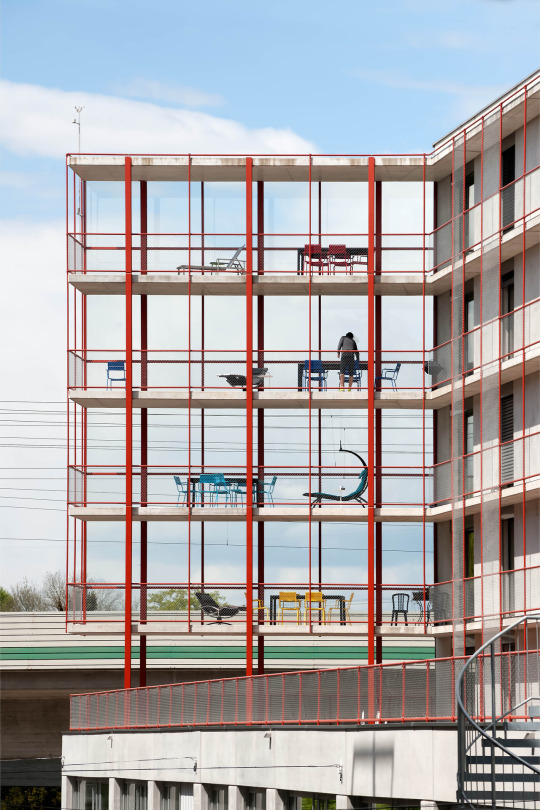
SCHNEIDER STUDER PRIMAS
ZWICKY SÜD, 2016
Dübendorf, Switzerland
Image © Andrea Helbling
#architecture#design#architect#art#designer#archdaily#artwork#photography#juliaknz#form#housing#public housing#social housing#swiss architecture#residential#urban living#context#architectural form#space#dezeen#ignant
37 notes
·
View notes
Text
Catherine Borowski has always had an active imagination. As a child, she dreamed that the car park on her north London council estate would be transformed into a garden. The reality was quite different. “No one had a car, so it was empty, grey and depressing,” she says. Now a sculptor and event producer, Borowski has made it her mission to fill unloved urban spaces with flowers – albeit virtual ones.
She and her partner Lee Baker are the founders of Graphic Rewilding, a project to install huge nature-inspired artworks into the urban landscape. “Where real rewilding isn’t possible, our goal is to inject the colour and diversity of nature into rundown spaces, urging people to notice – and find joy in – the world around them,” says Baker.
The pair believe that flowers possess serious powers, even when they’re not real. “We know that spending time in nature is good for us, but studies show that even pictures of plants have a positive effect on the mind,” says Baker. He cites research published in The Journal of Alternative and Complementary Medicine, which found that imagery of plants in hospital waiting rooms can help reduce feelings of stress in patients.
Baker, a painter and music producer, has long understood the benefits of biophilic design. Having suffered a breakdown 10 years ago, he found that drawing flowers was the only way to soothe his buzzy brain. “I would set out to draw dystopian landscapes, representative of my state of mind, but I’d always end up drawing flowers, which uplifted me,” he says.
It was around this time that Baker met Borowski, joining her production company as creative director. The pair have collaborated ever since, launching Graphic Rewilding in 2021. Since then, they’ve installed floral murals at locations including Earl’s Court station, Lewes Castle and Westfield Shopping Centre in Shepherd’s Bush – all hand drawn by Baker.
“We love galleries, but we focus on public art,” he says. “This way, our work is out there for everyone to enjoy.”
This year the pair have grand plans to create a series of stained glass pavilions (think greenhouses with colourful floral-themed panels), which they hope might find homes at Kew Gardens and the Eden Project. “The way light shines through the glass is magical,” says Borowski.
Even so, they concede that art is no match for Mother Nature. “Some people have suggested that our project detracts from real rewilding efforts. But both can co-exist,” says Borowski. “Of course we want more green spaces.” adds Baker. “But we aren’t gardeners. We’re artists. In the absence of nature, we want to create inspiring spaces through art.”
Overall, the response has been hugely positive. “The joy that these artworks bring is palpable,” says Baker, highlighting an early project in Crawley, West Sussex. “Many people in the town were employed by Gatwick airport and Covid had taken its toll,” he recalls. In a bid to spread some joy, the duo painted brick walls, billboards, benches and even bins with their signature floral flair. “Peoples’ reactions were heartwarming. There were so many smiling faces,” he says.
Elsewhere, in Earl’s Court, the pair transformed “a ratty piece of tarmac” into a modern-day pleasure garden, which is now often filled with children dancing and doing cartwheels on the way home from school. “Putting art into a place that previously felt unloved feels like cultivating joy where there was none,” reflects Borowski. “If something like this had been installed on my estate when I was a kid, it would have been a dream come true.”
-via Positive.News, November 6, 2023
#art#public art#mural#muralart#street mural#muralpainting#england#rewiliding#solarpunk#evidence based#stained glass#glass art#activist art#good news#hope#positive psychology#london#uk#public housing
73 notes
·
View notes
Text
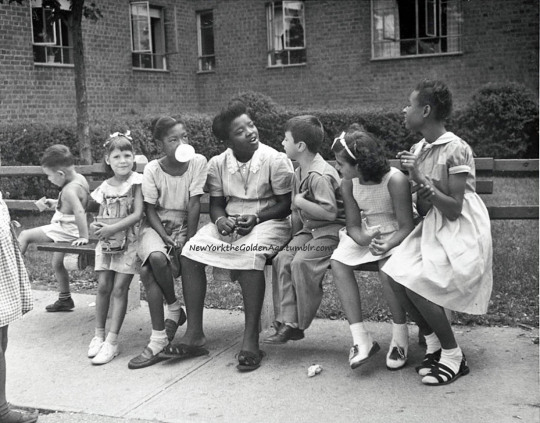
"Meeting of the Minds," Kingsboro Housing Project, Ocean Hill, Brooklyn, 1940s.
Photo: Joe Schwartz via the Smithsonian National Museum of African-American History & Culture
#vintage New York#1940s#Joe Schwartz#children#Kingsboro Housing Project#public housing#integration#vintage Brooklyn#vintage NYC
139 notes
·
View notes
Text
"A Dickensian saga has unfolded in St. John's, ending in the eviction of an elderly woman from public housing, for no reason the city will talk about.
The move has left seniors and the disabled community scared and confused.
Offstage and invisible was Shirley Cox, a disabled 82-year-old woman whose mental and physical safety, access to shelter, material possessions and personal agency lay in the hands of at least 11 non-disabled people.
The tension in council chambers was palpable, as protesters waited, clinging to a tiny thread of hope that somebody, anybody, would move that this eviction be added to the agenda so someone could express dissent.
But there would be no hero, no plot twist, no happily-ever-after.
Monday night's city council meeting included a dazzling performance of improvisational scripting, wandering narratives, ambient gaslighting, blame shifting, avoidance and scapegoating — backed by a chorus of echoes of the same oblique talking points, ad nauseam.
The mayor, resplendent in colonial regalia, dropped a gavel lest the name "Shirley Cox" be invoked in their presence.
Decorum must prevail, and anyway, they've done nothing illegal.
And just like that, a disabled senior woman was evicted from public housing without cause or explanation, and discarded into homelessness without any evident thought about the harm this will have first on Shirley Cox, but also on the disabilities community, and the BIPOC and LGBTQ communities who also are identified in the Human Rights Code as targets of discrimination.
The move is a signal to all of us that at any time, without disclosing why, even in the most dire of economic conditions, the city can and will evict."
Full article
Tagging: @politicsofcanada
#cdnpoli#canadian politics#canada#canadian news#canadian#st john's#newfoundland and labrador#newfoundland & labrador#housing#shirley cox#disabled#disability#public housing#eviction
141 notes
·
View notes
Text
In February 2023, a few months after I departed from my field site in Singapore, the Deputy Prime Minister announced significant changes to Singapore’s housing policies. In his eagerly anticipated budget speech for 2023, Lawrence Wong reaffirmed Singapore’s commitment to nurturing familial aspirations among Singaporeans and proceeded to outline measures aimed at reducing the uncertainties faced by (heterosexual) couples in their housing journeys. Chief among these measures was the granting of extra balloting chances to families with children and young married couples aged 40 and below (Ong, 2023). 1 Previously, both engaged and married couples received two ballot chances each, whereas now legally married couples and married couples with children would receive three balloting chances.
This announcement and its implications must be understood within context. Approximately 80% of Singaporeans reside in public housing flats (Lin, 2022), 2 representing some of the highest flat ownership rates in Asia and underscoring the success of Singapore’s public housing model—a model that Singaporeans and its leaders rightly take pride in. However, this success comes with a caveat. In Singapore, flat ownership is contingent upon adhering to and staying on a particular life path.
In brief, there are several pathways to acquiring a public flat. Among them, the Build-to-Order (BTO) housing program, known locally as “BTO,” is the most affordable and accessible route for Singaporean citizens to own a public flat. Eligibility to apply for a BTO before the age of 35 hinges on the formation of—or in the case of engaged couples, the intention to form—a conventional family nucleus. 3 (Singles may participate after 35.) 4 Eligible couples or families submit an online application, which is then entered into a computer-generated ballot. This ballot, occurring four times a year, can induce significant anxiety, as couples may succeed on their first attempt or as late as their 13th try. 5
It is this anxiety and uncertainty that the Deputy Prime Minister sought to alleviate by offering married couples more balloting chances. Returning to the formalities of the BTO process, couples must then wait 3 to 6 years for the flat to be built, and they risk losing their down payment (an amount that can be as high as 20,000 Singapore dollars) 6 if they separate or divorce during this period. Subsequently, after moving into the flat, they must fulfil what is termed a Minimum Occupation Period. For those who balloted as a married or engaged couples this typically entails remaining married and residing in the flat for a period of five to ten years, depending on the location of the flat. In other words, access to a subsidized flat in Singapore before the age of 35 is heavily contingent upon coupling and maintaining that union.
During my PhD fieldwork, I began to realize that what I was studying was not merely housing policy, but rather people’s endeavours to live together, and the various modes of romantic labour they engage in to synchronize their relational lives with grant, balloting, and flat building cycles. Particularly, I observed my interlocutors, many of whom were still in university, attempting to pre-empt uncertainties in balloting and long wait times by committing to serious relationships early. The idea was that finding a partner early would enable them to wait out multiple balloting attempts and access optimal grant opportunities. Often, they disclosed to me that their BTO partner was also their first romantic partner.
To facilitate this accelerated romantic trajectory, my interlocutors often adopted a decidedly pragmatic attitude toward romance. They sought not necessarily passion or love, but rather what Adely (2016) 7 termed compatibility when writing about marriage in Jordan. Compatibility, for Adely and for my interlocutors as well, referred to “more practical issues of financial security, the ability of a couple’s families to get along, as well as shared expectations of married life” (103). When one girl realized that her then-partner was not aligned with her romantic schedule, she reached out to her friends to ask if she should “leave now and cut my losses”. In a departure from conventional romantic timelines, I observed my interlocutors transitioning courtship to the period after they had already made a down payment for a flat but before the flat was ready. In essence, they committed to purchasing a flat together (and indirectly, to marriage), and then sought to determine or mold each other into the right marital or cohabiting partner. The implication seemed to be that, as one interlocutor expressed, a “person can be made right”. Another stated that the interim wait for the flat was a “rehearsal” for marriage. Yet, despite their best efforts, I also witnessed relationships fail. Ironically, they failed not despite, but often because of, attempting to fit their romantic lives onto a narrow path.
When one of my primary interlocutors, a 23-year-old Chinese-Singaporean woman named Grace, broke up with her boyfriend of a few years in the middle of my fieldwork, it came as a shock to both of us. They had already selected a unit and made their first down payment for the flat. She had diligently assessed their compatibility and conducted due diligence with extreme care. In fact, when they first got together, she asked him a list of questions about how he would handle familial conflict, his approach to finances, and his views on children. Satisfied that he was a stable partner who could be trusted for the long term, they agreed to ballot together. The irony was that when they broke up, the reasons she pointed to had nothing to do with their life goals or finances. Instead, she said she felt that he was almost too stable for her – “attraction mounts for him the more stable our relationship is, but I realize that it doesn’t work for me this way.” She had simply fallen out of love, and consequently lost her down payment. She was not alone. While some of my interlocutors managed to devise ingenious kinship solutions to circumvent flat restrictions, many realized that the romantic arrangements they sought in their schooling years or early twenties were not what worked best for them. In other words, paradoxically, the pursuit of the stability incentivized by the BTO generated more modes of romantic and financial uncertainties.
This is why I was uncertain about how to interpret the announcement regarding married couples receiving more balloting chances. A starting point could be to bemoan the continued lack of attention paid to the needs of those whose life trajectories differ from statist reproductive visions—such as single mothers, queer couples, and others. However, even among the group explicitly prioritized by the BTO, there appears to be a romantic hierarchy in effect. The recent change evidently favors married couples over engaged couples. In a Today article (Ong, 2023), 8 an interviewee is quoted as saying that the change would offer “some safety net so that if the timeline does not fit and we get married, after we get married, we’ll at least have some advantage.” In theory, I understand how this change could potentially alleviate some of the pressure to enter into relationships early. Couples could initially ballot multiple times as an engaged couple, and when they are ready to commit, they could then marry and ballot for a flat together. With increased balloting chances, they are now more likely to secure a flat. This, theoretically, should reduce the uncertainty that couples feel about obtaining a flat, a factor that supposedly drives young couples to rush into the ballot. However, I remain cautious. If housing supplies do not increase significantly, 9 this would imply that it would become more difficult for engaged couples to secure flats, while marginally easier for married couples. In other words, it would extend an already exclusionary criterion – between singles and normatively coupled individuals – to the differentiation between engaged and legally married couples.
While couples enter the BTO with the expectation and hope of eventual marriage, they also understand the inherent risks involved. For my interlocutors, expediting marriage closer to key collection was a strategy to limit potential entanglements in the event of a relationship breakdown. This remains a relevant concern considering the need to meet grant deadlines and the wait for a flat, which means the need to start finding a partner young might not change significantly. I worry that what has changed now is that some couples might feel that instead of using the waiting time as a “rehearsal,” a prelude to marriage, they might now feel incentivized to simply get married. This timeline, at least in the iteration that I found in the field, leaves little room for young people to evolve, to experiment, and to figure out who they are and what they want in a romantic relationship and marriage. We talk a lot about aspirations in Singapore – aspirations for a flat, for children, for marriage – that we seem to forget that desire, and the different but often messy paths through which people discover themselves and their needs, are also part of the calculus of life. Forgetting this ironically produces more, not less, romantic and, if one were to count the potential loss of a down payment, financial instability.
Joy Xin Yuan Wang
Joy is a PhD Candidate at the University of Cambridge, Department of Social Anthropology.
Notes:
Ong, Justin . 2023. “Additional BTO Ballot Chance for ‘Prioritised First-Timers’ a Fairer Move than Reserving More Flats for Them: Analysts.” TODAY. February 16, 2023. https://www.todayonline.com/singapore/prioritised-first-timers-hdb-bto-flats-2109006#:~:text=the%20previous%20day ↩
Lin, Chen. 2022. “Singapore Sees the Rise of Million-Dollar Public Housing.” Reuters, August 31, 2022, sec. Asian Markets. https://www.reuters.com/markets/asia/singapore-sees-rise-million-dollar-public-housing-2022-08-31/ ↩
In brief, an official family nucleus in Singapore is generally defined as
a) If you are married, you, your spouse, and your children (if any). b) If you are single: you and your parents. c) If you are widowed/divorced/separated: you and your children under your custody. d) Fiancé and fiancée e) Orphaned siblings
Marriage is central to the eligibility criteria because four out of the five officially endorsed pathways to forming a family nucleus flow from marriage. Note, for example, that option C does not account for mothers and fathers who have children out of wedlock. ↩
n August 2023, after this essay was written, the government announced greater changes to housing in Singapore. Two major changes included the recategorization of mature and non-mature estates into three categories- Standard, Plus, Prime. Prior to this change singles looking to purchase to BTO flats could only purchase 2-room flats in non-mature estates. While Singles continue to be limited in the size of BTO flat they can purchase (only 2-bedroom flats), they are now allowed to purchase flats from any location. (See this article for the details of the new changes https://www.channelnewsasia.com/singapore/national-day-rally-2023-hdb-flats-singles-prime-bto-resale-3711471) ↩
In the field I met couples who only succeeded on the 11th time. This rice media article suggests that it is possible to fail 13 times at the ballot: https://www.ricemedia.co/bto-hdb-singapore/ ↩
Fong, Kenneth . 2021. “Planning to Break-up after You BTO-Ed? You Might Lose about $40,000!” Blog.seedly.sg. September 25, 2021. https://blog.seedly.sg/break-up-bto-hdb-application/ ↩
Adely, Fida. “A different kind of love: compatibility (Insijam) and marriage in Jordan” The Arab Studies Journal, Vol. 24, no. 2, 2016, pp. 102–27. ↩
Ong, Justin . 2023. “Additional BTO Ballot Chance for ‘Prioritised First-Timers’ a Fairer Move than Reserving More Flats for Them: Analysts.” TODAY. February 16, 2023. https://www.todayonline.com/singapore/prioritised-first-timers-hdb-bto-flats-2109006#:~:text=the%20previous%20day ↩
The government has made promises and proposed measures to increase the supply of BTO flats. The most recent signs in February 2024 appear promising, with some flats promised to be delivered in a timeframe of within three years (https://www.straitstimes.com/singapore/housing/19600-bto-flats-to-go-on-sale-in-2024-over-three-exercises-instead-of-four-desmond-lee). However, how this will play out and how the acceleration of flat delivery will affect romantic timelines and decisions is yet to be seen. ↩
11 notes
·
View notes
Text


Source
“Research shows it costs taxpayers $31,065 a year to criminalize a single person experiencing homelessness while the yearly cost for providing supportive housing is $10,051."
#important#homelessness#current events#affordable housing#news#end homelessness#housing crisis#public housing#government#the left
696 notes
·
View notes
Text

#us politics#twitter#tweet#@gritty20202#landlords#all landlords are bastards#public housing#affordable housing#scalpers#music#music industry#concert tickets#2021
242 notes
·
View notes
Text

The new tenants. 🏙🌃🟧🟨🟥(mixed media collage)🏢
#de kooning#pablo picasso#picasso#basquiat#jean michel basquiat#art brut#naive art#primitive art#keith haring#outsider art#folk art#abstract face#pop art#andy warhol#rent#real estate#apartment buildings#urban planning#public housing#tenant#tenants#collage art#contemporary art#street art#bronx#williamsburg#staten island#oil stick#modern art#whitney museum
8 notes
·
View notes
Text
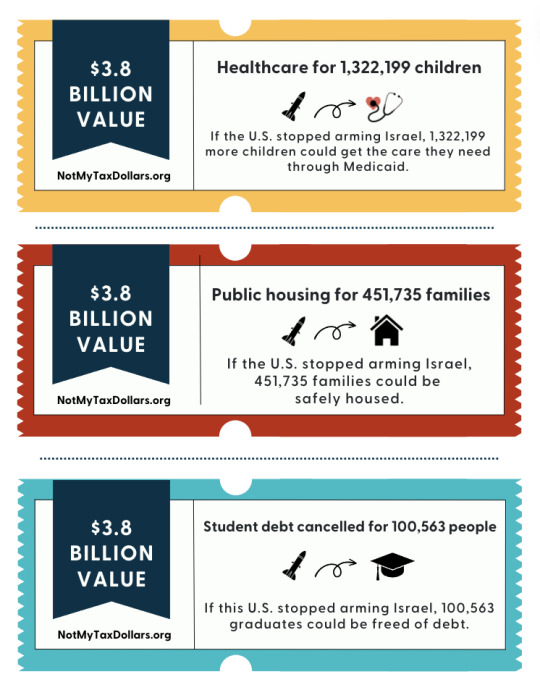
#israel#us politics#biden administration#palestine#joe biden#vote uncommitted#Not my tax dollars#healthcare#student debt#public housing
5 notes
·
View notes
Note
Re zoning regulation reform: could you go into detail as what that would look like in terms of wiping the slate clean. I feel like it would be better to go the houston route and just be zoning free
You do not want to go the Houston route.
youtube
Houston may claim to be "zoning-free" - and to be fair, it doesn't have some of the more common regulations on land use, or density, or height restrictions (more on this in a minute) - but the reality is far more complicated and the status quo is not one that's friendly to the interests of working-class and poor residents, or to the possibility of sustainable urbanism.
The answer to NIMBYism isn't to abolish all regulations and let the free market rip, it's to surgically target zoning, planning, and litigation that is used against affordable housing, public/social housing, mass transit, clean energy, and walkable neighborhoods, and to replace it with new forms of regulation that encourage these forms of development.
So let's take take these categories in order.
Zoning
As I tell my Urban Studies students, zoning is both one of the most subtle and yet comprehensive ways in which the state shapes the urban environment - but historically it has been used almost exclusively in the interests of racism and classism. Reforming zoning requires going over the code with a fine-toothed comb to single out all the many ways in which zoning is used to make affordable housing impossible:
The most important one to tackle first is density zoning and building heights limitations. The former directly limits how many buildings you can have per unit of land (usually per acre), while the latter limits how big the buildings can be (expressed either as the number of stories or the number of feet, or as both). Closely associated with these zoning regulations are minimum lot size regulations (which regulate how much land each individual parcel of real estate has to cover, and thus how many how many housing units can be built in a given area), and lot coverage, setbacks, and minimum yard requirements (which limit how much square footage of a lot can be built on, and what kinds of structures you can build).
the other big one is use zoning. To begin with, we need to phase out "single use" zoning that designates certain areas as exclusively residential or commercial or industrial (a major factor that drives car-centric development, makes walkable neighborhoods impossible, and discourages the "insula" style apartment building that has been the core of urbanism since Ancient Rome) in favor of "mixed use" zoning that allows for neighborhoods that combine residential and commercial uses. Equally importantly, we need to eliminate single-family zoning and adopt zoning rules that allow for a mix of different kinds of housing (ADUs, duplexes and triplexes, rowhouses/terraced houses, apartment buildings).
finally, the most insidious zoning requirements are seemingly incidental regulations. For example, mandatory parking minimums not only prioitize car-dependent versus transit-oriented development but also eat up huge amounts of space per lot. The most nakedly classist is "unrelated persons" zoning, which is used to prevent poorer people from subdividing houses into apartments, which zaps young people who are looking to be roommates and older people looking to finance their retirements by running boarding houses or taking in lodgers, as well as landlords looking to convert houses from owner-occupied to rental properties.
So I would argue that the goal of reform should be not to eliminate zoning, but rather to establish model zoning codes that have been stripped of the historical legacies of racism and classism.
Planning
Similar to how zoning shouldn't be abolished but reformed, the correct approach to planning isn't to abolish planning departments wholesale, but to streamline the planning process - because the problem is that right now the planning process is too slow, which raises the costs of all kinds of development (we're focusing on housing right now, but the same holds true for clean energy projects), and it allows NIMBY groups to abuse the public hearings and environmental review process to block projects that are good for the environment and working-class and poor people but bad for affluent homeowners.
As those Ezra Klein interviews indicate, this is beginning to change due to a combination of reforms at both the state and federal level to speed up the CEQA and EPA environmental review process in a number of ways. For example, one change that's being made is to require planning agencies and environmental agencies to report on the environmental impact of not doing a project as well, to shift the discussion away from petty complaints about noise and traffic and "neighborhood character" (i.e, coded racism and classism) and towards real discussions of social and environmental justice.
At the same time, more is needed - especially to reform the public hearing process. While originally intended by Jane Jacobs and other activists in the 1970s as a democratic reform that would give local communities a voice in the planning process, "participatory planning" has become a way for special interests to exercise an unaccountable veto power over development. Because younger, poorer and more working class, and communities of color often don't have time to attend public hearing sessions during the workday, these meetings become dominated by older, whiter, and richer residents who claim to speak for the whole of the community.
Moreover, because community boards are appointed rather than elected and public hearings operate on a first-come-first-serve basis, an unrepresentative minority can create a false impression of community opposition by "stacking the mike" and dialing up their level of militancy and aggression in the face of elected officials and civil servants who want to avoid controversy. (It's a classic case of diffuse versus concentrated interests, something that I spend a lot of classroom time making sure that my students learn.)
Again, the point shouldn't be to eliminate public hearings and other forms of participatory planning, but to reform them so that they're more representative (shifting public hearings to weekends and allowing people to comment via Zoom and other online forums, conducting surveys of community opinion, using a progressive stack and requiring equal time between pro and anti speakers, etc.) and to streamline the review process for model projects in categories like affordable housing, clean energy, mass transit, etc.
Litigation
Alongside the main planning process, there is also a need to reform the litigation process around development. In addition to traditional tort lawsuits from property owners claiming damage to their property from development, a lot of planning and environemntal legislation allows for private groups to sue over a host of issues - whether the agency followed the correct procedures, whether it took into account concerns about this impact or that impact, and so forth.
As we saw with the case of Berkeley NIMBYs who used CEQA to block student housing projects over environmental impacts around "noise," this process can be used to either block projects outright, or even if the NIMBYs eventually lose in court, to draw out the process until projects fall apart due to lack of funding or the proponents simply lose their patience and give up.
This is why we're starting to see significant reforms to both state and federal legislation to streamline the litigation process. The categorical exemptions from review that I discussed above also have implications for litigation - you can't sue over reviews that didn't happen - but there are also efforts to speed up the litigation process through reducing what counts as "administrative record" or by putting a nine-month cap on court proceedings.
Again, this is an area where you have to be very surgical in your changes. Especially when the politics of the issue divide environmental groups and create odd coalitions between labor, business, climate change activists, and anti-regulation conservatives, you have to be careful that the changes you are making benefit affordable housing, clean energy, mass transit and the like, not oil pipelines and suburban sprawl.
#public policy#housing#zoning#policy history#urban planning#public housing#social housing#yimbys#yimbyism#affordable housing#urban studies#urbanism#houston#nimbyism#nimbys#environment#climate change#clean energy
93 notes
·
View notes
Text
Great Idea 23: Public housing that engages the city

Public housing in the form of complete or partial neighborhoods started with HOPE VI and became standard practice, impacting the lives of people in cities and towns across America. Read more.
#great ideas#new urbanism#urban design#urbanism#cities#walkability#housing#public housing#neighborhoods#hud
8 notes
·
View notes